In the season of ripening with fragrant, fragrant and sweet raspberries, I want to collect not only a big harvest, but also to maintain the yield of bushes. Each gardener has its favorite raspberry varieties, there are more than 120 different varieties. The most popular raspberry variety is polka.
Malina Polka. Description
This is a relatively new variety of berries. Which was derived by crossing the best raspberry varieties in Poland in the late 90s. Because of the country, this plant and gave such a name. You can hear a few variations in the name of this grade "Polka" or "Shelf". Due to high yield, taste, this variety quickly gained popularity. After the international exhibition in 2003 presents the presentation of the new raspberry variety, Polka was known far beyond the limits of Poland and now in Europe, gardeners are greatly delighted with this variety, they are divided by shoots and advice to care for raspberry bushes.
What this popular polka? The fact that the cold-resistant shrubs and berries can ripen at a record low for this plant temperatures. For example, berries mature even at zero temperature, and a slight decrease of 1-2 degrees.
Fruiting period longer than very satisfied with not only the breeders, but amateur gardeners. So, the first fruits can be removed from the bush in early July, and then periodically remove the harvest right up until the first frost. This is assuming that the annual shoots. The variety is very fruitful. Experimental stations breeders set a record: from one bush for the whole period of fruiting 4 kg of berries has been removed!
Raspberry polka. Photo:
Remontant raspberry polka - Average height, from the roots of one plant can produce about 10 young shoots! Young shoots can stretch up to a meter, and they do not need the support. This is another feature of this variety and its advantage. Plus - high yield, large fruit, the top should not sag, even if the brush is large (on one hand more than 7 berries).
The plant has practically no thorns, so that the harvest and enjoy the fragrant sweet berries, can even a child. As for berries - they are simply unbeatable! It's a real dream come true for the gardener, because each berry large, regular shape of a thimble, with small drupes. The flesh of each berries bright, juicy and not watery. As for the flavor, raspberry very sweet, but the sweetness is not cloying. We can say that in this sort of harmony as a light acidity and share sweets. Therefore, this strain is considered to be the best and most elite varieties of raspberries in Europe.
raspberry polka Characteristics:
- High productivity. As previously mentioned, maturation consistent with the first weeks of July and the beginning of October. On average, it can be said, if the climate is favorable, met all the conditions of cultivation, the fruiting period lasts about 3 months.
- Fruit - the bright, compact shape, large size. To taste - a harmonious sweet and slightly sour.
- Small drupe, the consistency of the pulp of raspberry juicy and dense, with no excess water. Aroma - a gentle, pleasant, unobtrusive.
- Each brush matures much fruit: between 7 and 10-11 berries. If annual shoots, the maturing earlier. fetal weight: 3 g or so. The biggest berry weighed 5.5 grams! The first berries are always a little bigger, a length of about 3 cm, the next smaller -. About 2-2.5 cm Fruiting early when compared with the kind of "Heritage".
- Excellent berry resistance - they are last saved on the bush, and the harvest does not flow and does not rot as quickly as other varieties. Berries are perfectly transferred to transportation, and if they were frozen, then externally do not lose their properties and look like they only rushed.
- Great for billets for the winter: for frost - ideal, suitable for cooking juice, jelly, morse and jam.
- The variety is resistant to diseases, especially to rot (almost all raspberries are subject to this disease), as well as to the cobweb tight.
Surprisingly, but the most high raspberry yield is the highest! From a square meter you can collect more than 3.5 kg of berries! And, as previously mentioned, this variety gives a harvest twice a year, but only when all the conditions for the care of the bushes. This is not only cropping, watering, but also the introduction of feeding. If you do not adhere to the rules, then the yield will be reduced, the berries will be smaller and not so juicy.
What are the minuses:
- the plant is subject to root system;
- there is a surgery of replacement shoots;
- the plant is steadily for heat and frosts, but it is easy to turn into a plus with proper care than in minus.
Raspberry Polka: landing and care
To collect a good harvest, you need to try to create optimal conditions for the full development of seedlings.
Landing Malina Polka, Basic Rules:
- Polka raspberry seedlings must be planted before the growing season will begin or after, if you did not have time. That is, the dates of the landing are as follows: with the onset of spring or at the end of autumn.
- In the event that the root system is closed, then landing is allowed at any time of the year. Exception - Winter.
- Choose a place to land. Ideal - if it is the sun lit by the sun.
- Soil - weakness, podzolic, turf. But, since the variety is unpretentious, will grow on any soil, because for polka is not so important as the introduction of nutritional mixtures. Therefore, before planting the plant, it is necessary to prepare a hole: to make humus (2 buckets enough) + "Azofosk" in the amount of 4th century.
- The distances between the wells - 50 cm, and between the rows it is enough to leave 1.5 m.
- The location of the series - can not be observed, but it is advisable to put raspberries from the north to south, then the plant will feel as comfortable as possible.
Where to buy seedlings and how to choose them correctly, gardener reviews that successfully bred Malina Polka:
- choose seedlings only in specialized places: nurseries or stores;
- pay attention to the size of the bush: each bush should be thick, developed, without damage and dry plots. If there are on roots of growth and peeling - it may be a sign of the start of the disease;
- each escape at the base should be present 3 kidneys from which branches for fruiting will develop;
- as for the shoots - they must be clean, without cracks, spots and black splashes.
How to plant Malina Polka:
- Landing in the spring: the preparation of the soil is minimum for 1.5 months, you need to scatter on top of the soil such a soil: manure (20 kg), sphphosphate (70 g), potassium sulphate (50 g), mix everything. The number of fertilizers is calculated per square meter of land.
- I dig a holes 14 days before the alleged landing. The diameter of each pit is 40 cm, depth - half meter. The upper soil must be mixed with the fertilizer mix, pour out into the pit. If the soil is heavy, then add sand. Square meter take 4 buckets.
- The seedling needs to be lowered neatly into the pit, so as not to damage the roots. Laying - horizontal. Gently trigger the earth seedling, the substitution point should be lower than the soil level literally by 3 cm.
- Soil complies, you can slightly tamper legs, after which there is a depression around the seedling for watering.
- Pour each seedling. On each hole - on the bucket of water.
- When the moisture is absorbed, the wells need to be mulched: it can be both freshly dried earth, straw and peat.
- Pruning - from the surface of the earth by 40 cm.
- Between rows, we observe the distance - at least 1 m 50 cm, you can 2 m. Between the holes, the gap of at least 50 cm.
- Landing the raspberries to exercise only in dry weather, when the windless.
The reproduction of raspberry polka
Plant multiplies in a vegetative way. Gardeners like to multiply this variety with cuttings or rhizomes siblos. Cuttings will have to prepare from spring, removing young shoots of replacement. There are no problems with this, because every year this variety forms a lot of shoots.
Read more about the methods of reproduction:
- Fast way: the root siblings are taken in spring or autumn. From the center of the plant (age 2-3 years), digging one part, the diameter on average should not be greater than 20 cm. The bush, with a diameter of 10 to 20 cm transplanted to a new place. And what remains from the root system, for 1 only the season can develop up to two dozen offspring, which will appear gradually.
- Green cuttings - billet at the end of May. It is taken from the annual shoots, cut off the desired cuttings, removing along with a lump of land. Communicable processing of cutting with wood coal. So that the cuttings are rooted faster, it is put in the soil (light and nutritional mixture), and after rooting along with a lump of land (4 weeks later), planted on the site.
Malina Polka: Care and trimming
Pruning is the most important stage in the care of Malina Polka. The future harvest depends on this and its quantity. The main rule of trimming is to form a bush, consisting of at least 5 shoots, maximum - 7 pcs.
Features Trimming:
- if you need to collect twice harvest, then the raspberry must be cut 2 times: in the spring and at the end of the autumn (if the autumn was turned out to be warm, otherwise - before the onset of the first frosts). It is necessary to remove the shoots on which the fruits were formed. In addition, you remove all damaged shoots. Only summer harvest remains, which was previously formed, as well as young one-air, the berries will be ripened in autumn;
- assembling one harvest of polka raspberry, trimming of 1 time, in November. Stems are removed to the soil level without hemp.
All that was cut, you need to remove from Malnick and in the ability to burn.
Care for a popular raspberry variety is not complicated, but there are rules that will help achieve good yield.
What you need to take into account in caring for the raspberry:
- Many beginner gardeners are concerned about such a question, is it worthwhile to strengthen the raspberry for the winter? In any case, mulching does not hurt. Straw, large tyrsa, and better sawdust, peat, agrofiber, laptic - suitable any of these materials. Only a small tyrus is better not to take, as she quickly absorbs moisture. With the onset of spring fir branches, it is necessary to remove, as they contribute to the acidification of the soil.
- Some gardeners complain that over the years, the grade is minted, as the soil is depleted. If after the 3rd year it is noticed, then you need to transplant bushes to another place, and the old soil feed and sow sittings.
- Raspberry does not like hot, dry air. If the temperature is higher than + 38-40 degrees, the berry is dried, the green mass is lost. But the plant is unique, only the first ripe berries can be cleared, the rest will hide under the shadow of the thrust leaves. This is a unique feature of this variety.
- To avoid heat and scorching sunlight, on the one hand (Eastern), it is better to make a shadow and plan for example, corn.
- What should be watering? Moderate, if you went to tightening rains, then the roots may suffer from the lack of oxygen. How to understand it? You will see that the tops of the raspberries begin to shrust. To avoid the death of the plant, you need to loosen the soil often.
- Tie or not? It is better to make a support, although polka is low, but a decent weight of the berries and the flexibility of the stems can affect the development of the plant. Therefore, it is better to use V or T-shaped backups.
Read more about Malina Polka Valina, see this video. Footage:


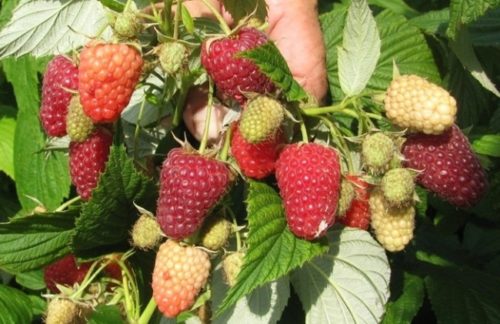
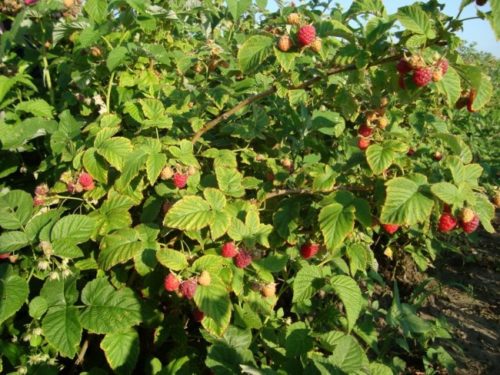
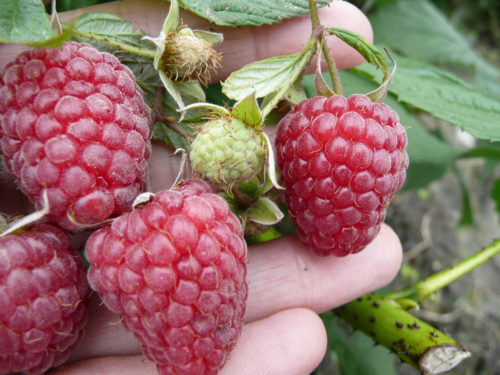
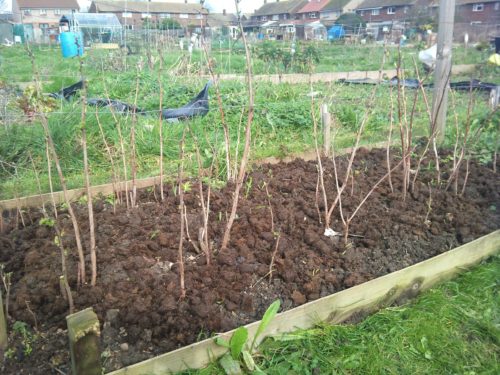
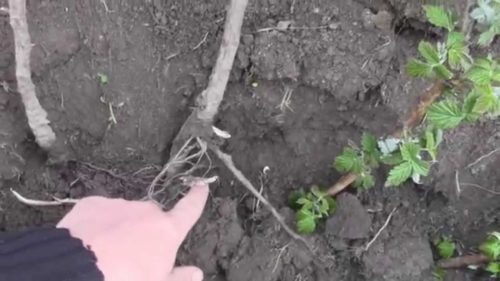
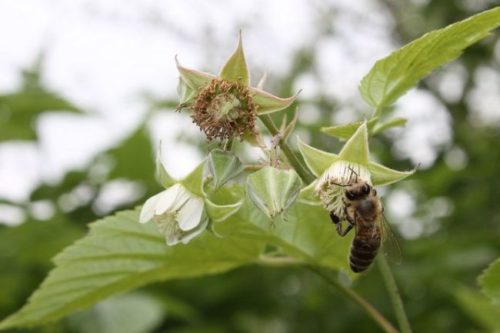
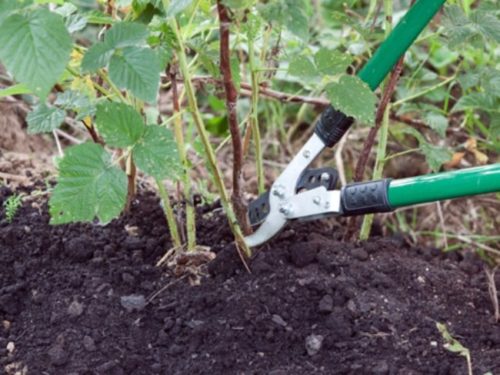
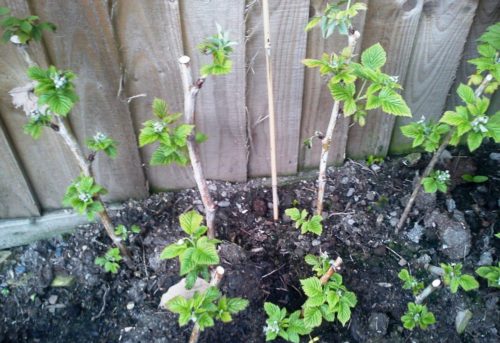












 Start a discussion ...
Start a discussion ...